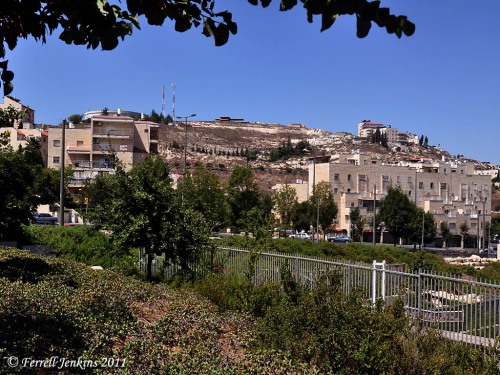'via Blog this'
Somthing new, something old in Israel
No, we did not attend a wedding today. Leon and I are trying to see some places we have missed before. I have traveled here more than Leon, so I don’t like passing up a place he hasn’t visited.
As we left Jerusalem this morning we missed a turn and ended up in one of the new Israeli suburbs called Pisgat Ze’ev Ma’arav (West). This suburb is on the east side of Tell el-Ful (Hill of Beans in Arabic), identified as biblical Gibeah. In an effort to find our way back to the main street to get on the highway to go to the Jordan Valley I saw a side of Tell el-Ful that I had not seen before. I had always seen the tell from the West, but now I was was looking at the East side.
How does one recognize Tell el-Ful? Beans no longer grow on the mound. Prior to the 1967 war, when the Old City of Jerusalem and the area under consideration was in Jordan, the late King Hussein of Jordan was beginning to build a palace on the top of the tell. The uncompleted structure still stands there as a silent monument to a failed plan.
The view from the east is impressive. The tell can be seen framed between the new buildings of Pisgat Ze’ev Ma’arav (West). I was beginning to fume a bit about missing the road I intended to take until I saw Tel el-Ful (Gibeah).
Several biblical references mention Gibeah as the home of Saul. In fact the city is even called Gibeah of Saul in 2 Samuel 21:6, and Gibeah of Benjamin in 1 Samuel 13:2. Saul was the first king of Israel from about 1050 to 1010 B.C.
William F. Albright excavated Tell el-Ful and found evidence of a fortress. Many think this would have been the palace of King Saul. An iron plowshare was also found in the excavation.
There is a nice photo by Eli Berckovitz of the skeleton structure of King Hussein on Wikipedia here.


No comments:
Post a Comment